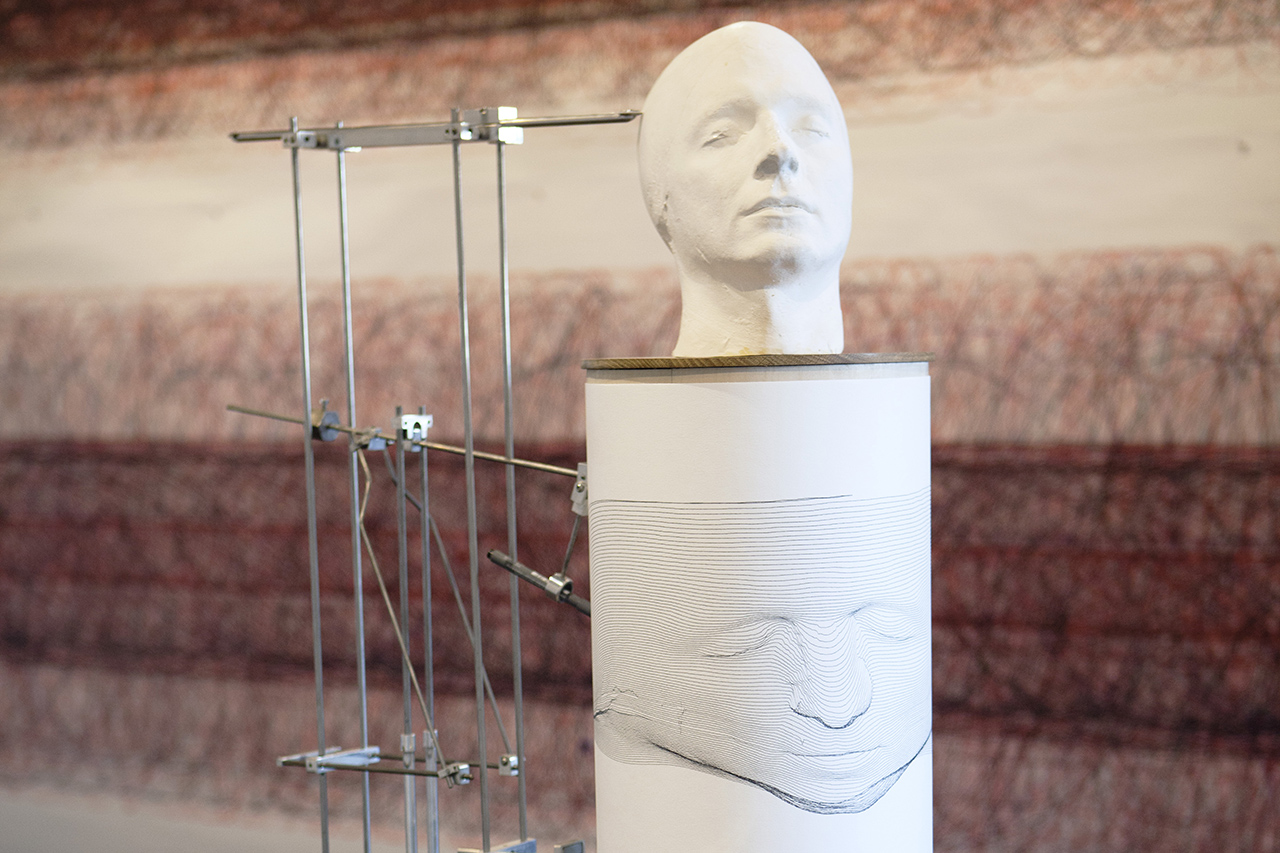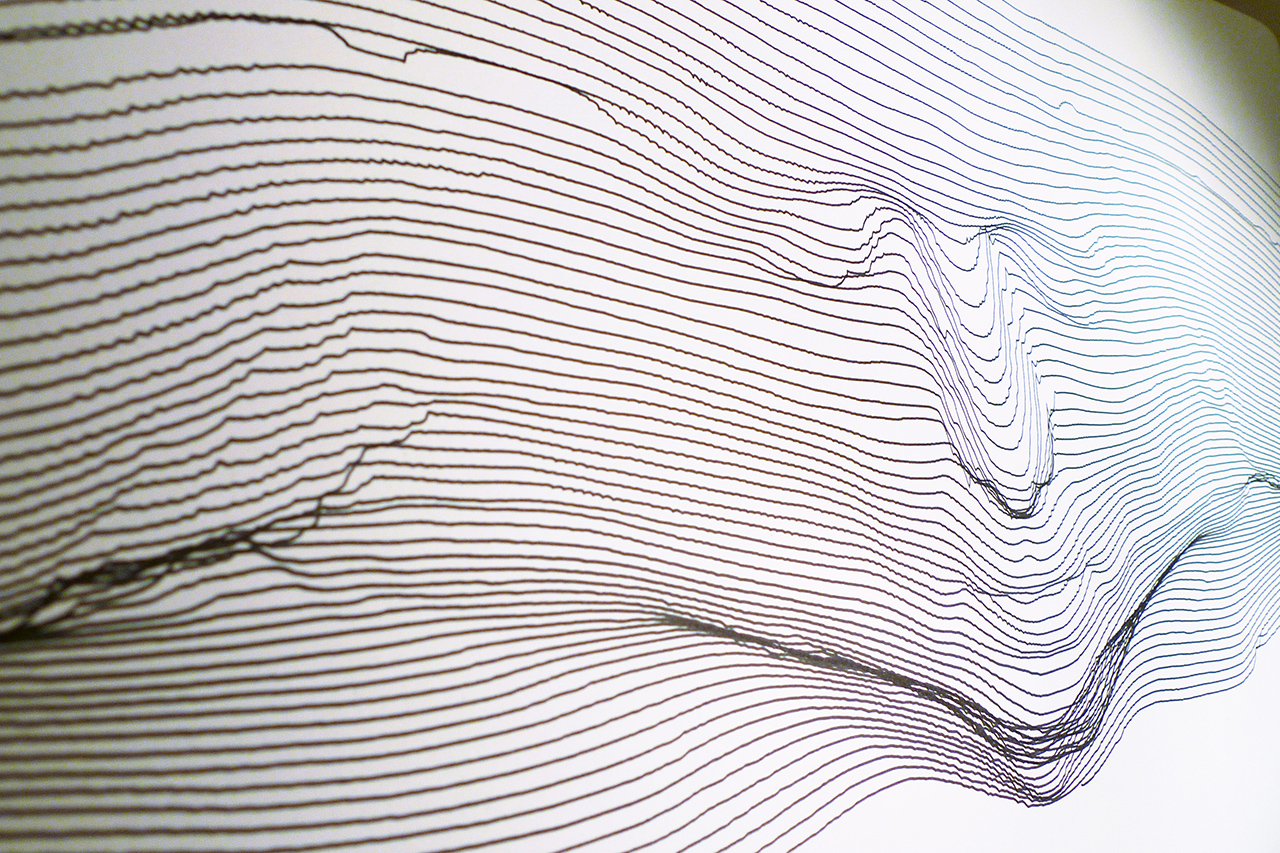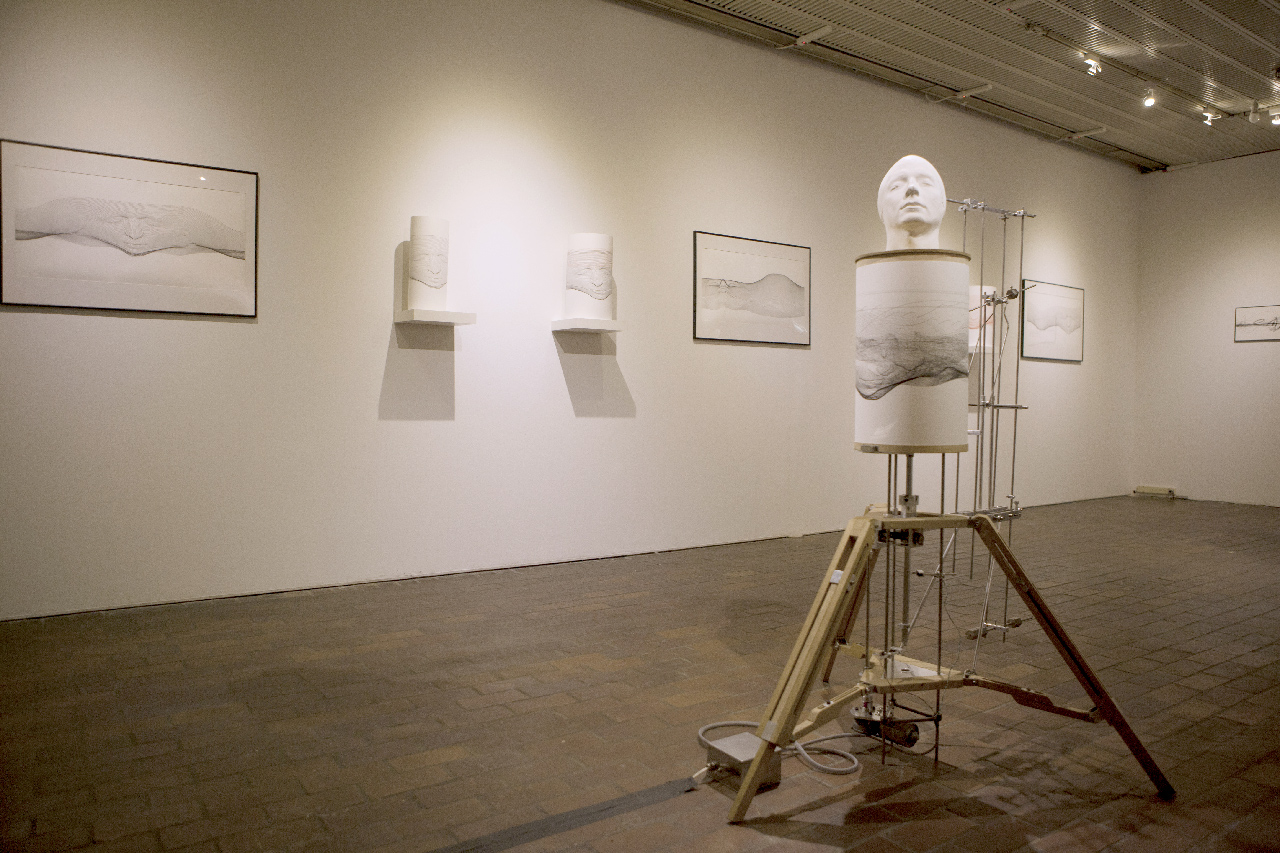Balint Bolygo
"Trace II" (2012) est une machine sculpturale faisant allusion aux découvertes et instruments scientifiques. Comme Trace I (2008), l'oeuvre est essentiellement un ordinateur mécanique piloté par un programme analogique provenant d'un buste en plâtre en rotation. Le mécanisme savamment équilibré mesure lentement la topographie d'un moulage d'une tête humaine et traduit ses ondulations sur une surface cylindrique en rotation. Il en résulte une repéresentation d'un diagramme topographique qui est à chaque fois une pièce unique. Ce travail se réfère aux avancées en imagerie médicale telles que profilage ADN, scan IRM et scan 3D (aujourd'hui popularisé avec les imprimantes 3d). Trace II explore les processus générant ces images fantastiques et y reconnecte le spectateur d'une manière tangible. Trace II n'est pas seulement une machine à dessiner traçant à partir de notre condition humaine, c'est aussi un questionnement sur notre capacité à comprendre les avancées de notre monde de plus en plus technologique. Trace II utilise des technologies du passé directement lisibles et moins aliénantes - plus proches du principe naturel de l'empreinte digitale - pour nous faire réfléchir aux technologies actuelles.
About the artist:
Bálint Bolygó was born in Pécs (HU), in 1976, where he spent his early childhood years, before moving to the UK at the age of nine. He graduated with an MA in Fine Art at Edinburgh University in 2001. His early work already attracted public attention at the Royal Academy Summer Exhibition in 1999. His first major show in London was a collaborative Group Show with David Mach RA at A.T.Kearney Ltd., Berkeley Sq in 2002. In the same year he was selected for the Bloomberg New Contemporaries exhibition at the Barbican’s Curve and the Liverpool Biennial. His first Solo exhibitions in London included ‘Soft Machines’ at the Hiscox Art Projects in 2003 and ‘Mappings’ at the Long and Ryle gallery in 2005. He worked at Antony Gormley’s Studio, for over five years whilst he moved to London and established his own studio in East London.
Since 2006, Bolygó’s continuous involvement with London’s Kinetica Museum, has led to numerous exhibitions in London and abroad, that include ‘Magnetic Visions’, ‘Universal Man’, and ‘Creatures Great and Small’ and ‘Mind over Matter’. He is an active member of the International Kepes Scociety dedicated to light art, and continues to exhibit internationally and with the organisation.
His Italian exhibition’s include the prestigious San Fedele Art Prize, Milan (2008), sculpture biennial of Piemonte, Turin and Kinetic Step at Step 09 art fair, 2010 Milan. Other international exhibitions include a solo show at Budapest’s Feszek Club 2009, Locus Solus, Benaki Museum Athens 2010, Vienna Art Fair 2009/2010 and a commission for the Lightwaves Festival in Dublin’s Science Gallery 2009. His work ‘Polycycle’ has also been selected for the Hybrid Art Moscow in 2011.
In the summer of 2010, he unveiled an ambitious permanent light installation ‘Aurora’ for the newly opened five-star Town Hall Hotel in East London. This was followed by another major light sculpture commission for London’s Canary Wharf tower in 2013.
Bolygo’s international acclaim lead him to Boston in the Autumn of 2013 where he had two simultaneous solo exhibitions at Huret & Spector Gallery and Boston Cyberarts gallery. Bolygó lives and works in London.
Une archive : 1999-2010-2019
Cette page est une archive du site d'iMAL tel qu'il existait entre 2010 et 2019. Il documente activités et projets créés depuis 1999.
Pour notre actualité et nos activités plus récentes, veuillez vous rendre sur notre nouveau site https://imal.org



